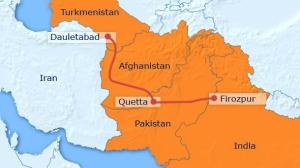Western tensions with, and sanctions against, Iran prevent cooperation which could promote an economically stable Afghanistan.
Several months ago, reports surfaced indicating that the United States was unknowingly buying mixed, partially Iranian-sourced fuel from Turkmenistan for use in Afghanistan, in violation of the sanctions. These reports illustrate ISAF’s struggles to develop economic stability in Afghanistan, while simultaneously avoiding economic interactions with Afghanistan’s neighbor, cultural and linguistic cousin, and major trading partner, Iran.
Iran’s investments in Afghanistan span a vast number of industries and regions, although they are especially prominent in infrastructure development, and in the Western portion of the Afghanistan, where cultural and social ties between the two nations are strongest. According to the United States Institute of Peace, Iran is now among Afghanistan’s top five trading partners.
In terms of economic and political stability, Iranian interests in Afghanistan are frequently in line with NATO-ISAF aims. On a political level, Iran was a major player in the 2001 Bonn Conference, during which Iranian officials were instrumental in developing a vision of a peaceful, post-Taliban Kabul. During the conference, the Iranian government illustrated that its anti-American ideology did not prevent it from recognising that the Taliban government hindered Iran’s geopolitical interests.
Economically, Iran has promoted the idea that the development of Afghanistan as a hub or transport center for regionally produced energy would stabilise the country, while simultaneously allowing Iran to easily and cheaply export fuel to China. Iranian aid to Afghanistan has frequently been used to build roads linking Afghanistan to Iranian ports. NATO and the United States likewise recognise the natural position of Afghanistan as a major hub for overland transport between the various Asian regions. In an effort to develop Afghanistan as a regional center for transit, the United States has promoted a number of projects associated with the so-called “New Silk Road.”
Support for projects like the TAPI (Turkmenistan, Afghanistan, Pakistan, India) Pipeline, which aims to transport Central Asian fuel into South Asia, illustrate the desire of the United States and its allies to promote the “New Silk Road” in Central and South Asia. However, at present, all western visions of the “New Silk Road” emphatically exclude Iran. While emphasising that economic and political stability can be achieved in Afghanistan partially through increased regional trade, the proponents of the “New Silk Road” tend to ignore the fact that, in the long run, Iran must also play a role in this stability.
Of course, the tensions between Iran and many of the ISAF nations, particularly the United States, are unrelated to their shared interests in Afghanistan. Indeed, while Iran publicly supports the Karzai regime, there is evidence that in some instances, it has worked to destabilise NATO forces. In particular, it is likely that Iran finances vocal anti-NATO religious leadership among members of Afghanistan’s Shi’a minority.
Despite this, it is apparent that on economic issues, particularly those related to infrastructure, transport, and regional integration, Iran’s interests often align with NATO goals. Sanctions and the lack of political connections prevent NATO and especially the United States from taking advantage of these shared interests. In turn, as ISAF prepares to withdraw from Afghanistan, opportunities for cooperation which could lead to economic stabilisation are lost. At present, a permanent détente between the United States and Iran appears to be a long way off. It will certainly come too late for Afghanistan, the country which may stand to benefit the most from cooperation between the two.











